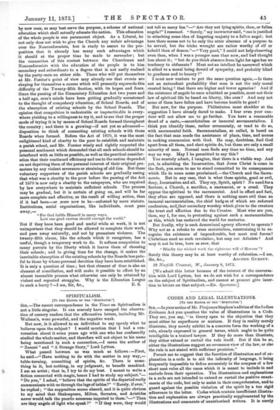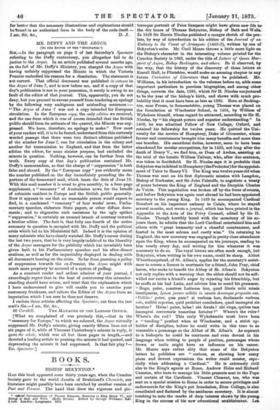CODES AND LEGAL ILLUSTRATIONS.
[TO THE EDITOR OF THE "SPECTATOR."] SIR, —In your notice of Mr. Fitzjames Stephen's edition of the Indian Evidence Act you question the value of illustrations in a Code. They are, you say, " in theory open to the objection that they must either be superfluous or noxious. If they in reality merely illustrate, they merely exhibit in a concrete form the working of a rule, already expressed in general terms, which ought to be quite intelligible to a trained lawyer. If they do more than illustrate, they either extend or curtail the rule itself. But if this be so, either the illustrations suggest an erroneous view of the law, or else the rale is not stated with sufficient precision."
Permit me to suggest that the function of illustration and of ex- planation in a code is to aid the infirmity of language, it being frequently impossible to define accurately in the compass of a few short neat rules all the cases which it is meant to include in and exclude from their operation. The illustrations and explanations in a code are not intended to extend or curtail the positive enact- ments of the code, but only to assist in their comprehension, and to guard against the possible violation of the spirit by a too rigid adherence to the letter. Codes which contain insufficient illustra- tion and explanation are always practically supplemented by the illustrations and comments of unauthorised writers. It is surely



































 Previous page
Previous page